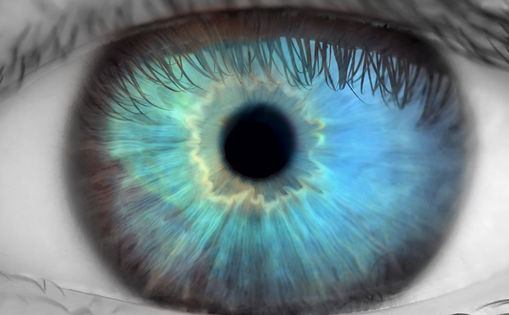High-frequency deep sclerotomy (HFDS) glaucoma surgery is a new ab interno procedure to lower the intraocular pressure in open-angle glaucoma. Using high-frequency energy, six small pockets are formed which significantly reduce the outflow resistance for aqueous humour. The pockets penetrate through the trabecular meshwork and Schlemm’s canal and end in the sclera.
High-frequency deep sclerotomy (HFDS) glaucoma surgery is a new ab interno procedure to lower the intraocular pressure in open-angle glaucoma. Using high-frequency energy, six small pockets are formed which significantly reduce the outflow resistance for aqueous humour. The pockets penetrate through the trabecular meshwork and Schlemm’s canal and end in the sclera.
The devices used for HFDS ab interno glaucoma surgery are the Oertli abee® glaucoma probe with a specially formed platinum tip. The abee tip, with its handpiece, is connected to an Oertli surgery platform. A four-mirror gonioscopy lens is placed on the cornea to open the view into the iridocorneal angle.
The target point for the application is the iridocorneal angle opposite the incision, normally nasal. However, the probe design also allows access to the lower orbital area.
The minimally invasive HFDS ab interno glaucoma procedure is ideal for combined cataract and glaucoma surgery. It is applied after completion of the cataract surgery with the intraocular lens already in place and the pupil narrowed. However, HFDS can easily be performed as a singular procedure. In this case, the use of a high-viscosity viscoelastic is recommended, as well as pupil-narrowing drops (for instance carbachol).
Performing the High-frequency Deep Sclerotomy Procedure
- The anterior chamber is filled with a viscoelastic substance.
- Methocel is applied to the cornea.
- The abee tip probe is inserted through the incision and positioned at the desired point of application.
- The four-mirror gonioscopy lens is placed on the cornea allowing visualisation of the iridocorneal angle. Do not push on the limbus, to avoid formation of Descemet folds, which could obstruct view into the angle.
- Place the tip at the level of the trabecular meshwork and simultaneously press the pedal and push the tip of the probe forwards. Do not perforate. After three bleeping sounds, release the pedal and retract the abee tip from the pocket.
- Repeat the procedure and place five more pockets for a total of six close to each other.
- As with many other surgical glaucoma procedures, HFDS ab interno glaucoma surgery may lead to IOP pressure peaks within the first days post-operation. This is an absolutely common phenomenon. Avoid application of pressure-lowering drops because it can slow down the healing process. The eye pressure will reduce itself to the mid-tens mmHg and will continue to drop for a period of six months. However, the following post-operative drug regimen is mandatory: tobramycin/dexamethasone, either as a fixed-dose combination, or separately four times a day for four weeks post-operation, and pilocarpine 2 % eye drops for four weeks.
The HFDS ab interno function with abee tip can be installed on any yellow Oertli surgical platform. ■







